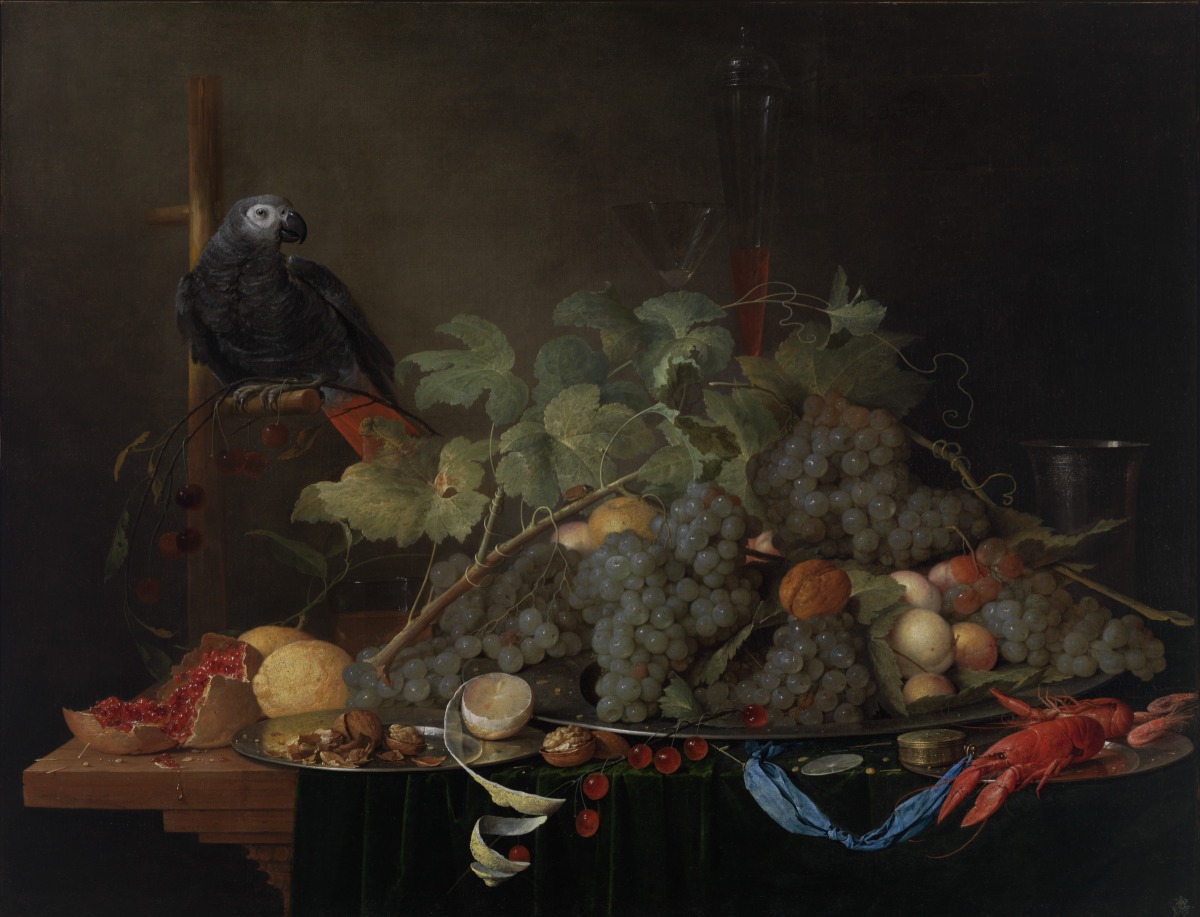
Still Life (Primary Title)
Jan Davidsz. de Heem, Dutch, 1606 - 1684 (Artist)
Elaborate still lifes featuring luxurious and exotic objects from around the world became popular after 1640. This generation of prosperous Dutch citizens looked at worldly goods less suspiciously than their parents had—they enjoyed wealth and sophistication represented by expensive imports such as the African gray parrot shown here. Antwerp, where de Heem moved in 1636, was the most active market for such paintings; its citizens had never been as strict as their Calvinist neighbors.
A watch in a beautifully detailed golden case (lower right), its key attached by a blue ribbon, accompanies the lobster, parrot, and expensive vessels. However, watches in paintings were often reminders that worldly pleasures were fleeting and best enjoyed in moderation. Scholars disagree about the central meaning of paintings like this.
What do you think the artist is saying? Is the meaning really so well hidden?
Look Here: FEAST Exhibition, Virginia Museum of Fine Arts, Richmond, VA, March 15-June 26, 2006
17th Century Dutch and Flemish Paintings, Roanoke Museum of Fine Arts, Roanoke, VA, March 26 - April 22, 1981
Civilisation Revisited, Wichita Art Museum, Wichita, KS, December 4, 1971 - January 30, 1972
Baroque Art: Art of Elegance, Denver Art Museum, Denver, CO, October 3 - November 15, 1971
Masterpieces: The Art of Flower Arranging with A Fine Arts Exhibition, Upperville Garden Club, Trinity Episcopal Church and Parish House, Upperville, VA, October 5, 1963
Pictures Jefferson Wanted, University of Virginia Museum, Charlottesville, VA, October 20 - 29, 1961; Lynchburg Fine Arts Center, Lynchburg, VA, September 23 - October 15, 1962
[1] Graf is German for the title of 'Earl.' Possibly Franz Wenzel, Graf von Kaunitz-Rietberg [1742-1825], an Austrian general and son of statesman Wenzel Anton von Kaunitz-Rietberg. He resided at Palais Kaunitz, Mariahilfer, Austria, until his death in there in 1825.
[2] Kunsthandel P. de Boer is a gallery specialized in Dutch and Flemisch Old Master Paintings, which was established in 1922 and has been located in Amsterdam ever since.
[3] Name provided by Ian Kennedy, President of Dickinson Roundell, art dealer, in association with Newhouse Galleries, as the individual from which Newhouse Galleries acquired the painting in 1961. No further identifying information given. See VMFA Curatorial file.
[4] Accessioned February 16, 1961.
Some object records are not complete and do not reflect VMFA's full and current knowledge. VMFA makes routine updates as records are reviewed and enhanced.
